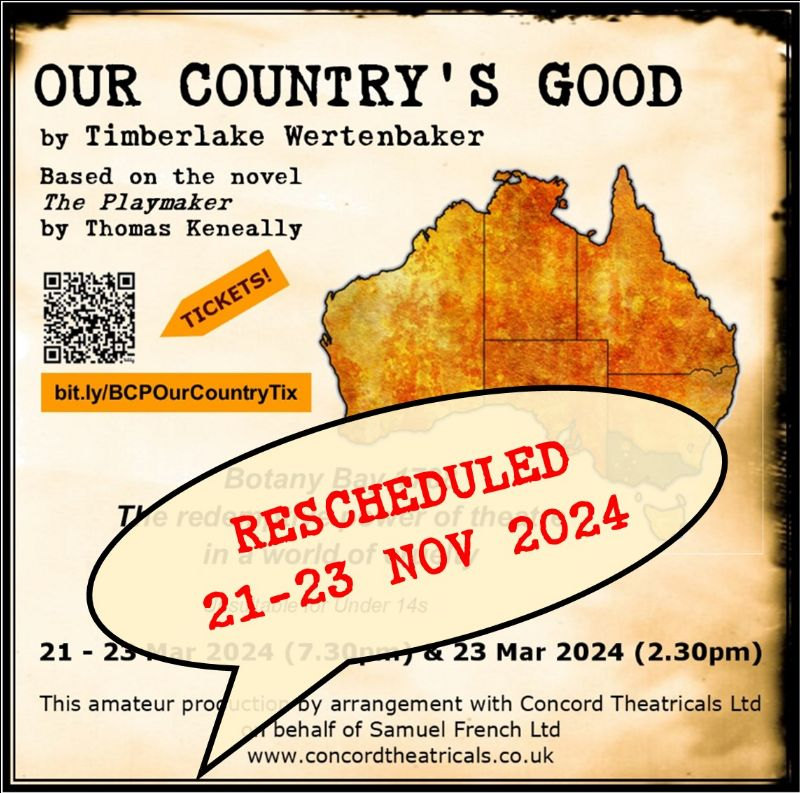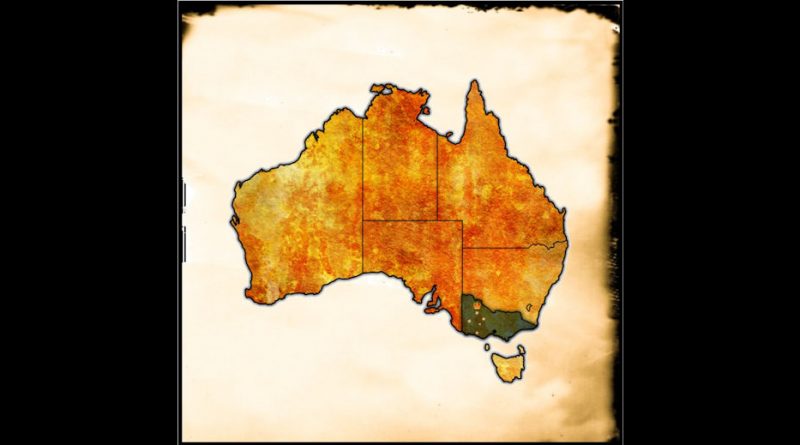See Important Message – Our Country’s Good Rescheduled
We have received notification from The Mill Arts Centre (see below) that the Theatre Floor Maintenance will not be complete in time for our production of Our Country’s Good.
We have investigated alternative performance venues but could find no suitable option available. We will, therefore, be rescheduling the production to 21-23 November 2024.
If you have already booked tickets, The Mill Box Office will be in contact with you directly to arrange re-booking or a refund.
If you are a BCP Gold Card Holder, the following options are available:
- redeem ticket/s for our July 2024 production of Home, I’m Darling
- we will adjust your 2024/2025 subscription when renewing in September 2024
- receive a pro-rata refund against this season’s subscription – please forward bank details to Jem Turner – goldcard@banburycrossplayers.org.uk
We are very much looking forward to bringing this excellent show to you in November.

FROM THE MILL ARTS CENTRE
Important Update: Theatre Floor Maintenance:
As you may be aware our Theatre has been out of action over the past three weeks due to essential repairs to water damage to the floor, which we had expected would be completed by the start of this week.
Regretfully, following further inspection we have now learned that more extensive repairs are required, and we have therefore needed to make the difficult decision to reschedule or make alternative arrangements for all events taking place in the main auditorium up until 23rd March inclusive. We sincerely apologise for any inconvenience this will cause, and we will contact ticket holders for the affected events as soon as possible to advise them of the rescheduled date or alternative arrangements.
All events in other areas of the building (e.g. Art Studio, Dance Studio, Long Room, Millers Bar) are going ahead as planned and the Cafe Bar remains open as usual.
As a small venue and a charity, we thank you for your understanding during this difficult time and we sincerely apologise for the disappointment and inconvenience this will cause for your plans. Please be assured that we are working hard with our partners to resolve the issue as swiftly as possible whilst ensuring the safety of our building and all those who use it.
Currently all events from 24th March onwards are scheduled to go ahead as planned and we look forward to welcoming you back to the Theatre very soon. We will update ticket holders and share details on our website and social media as soon as possible if this changes.

